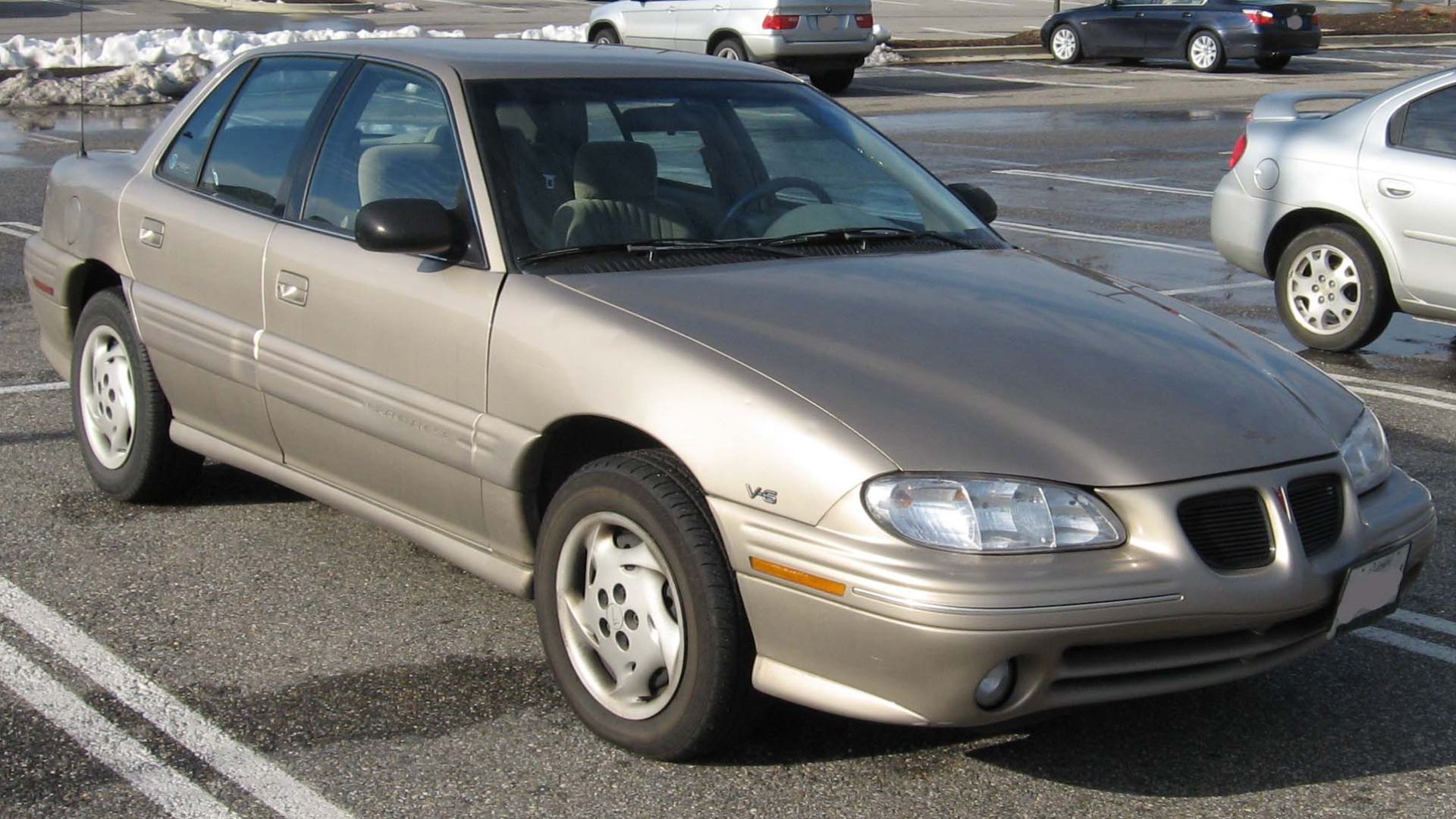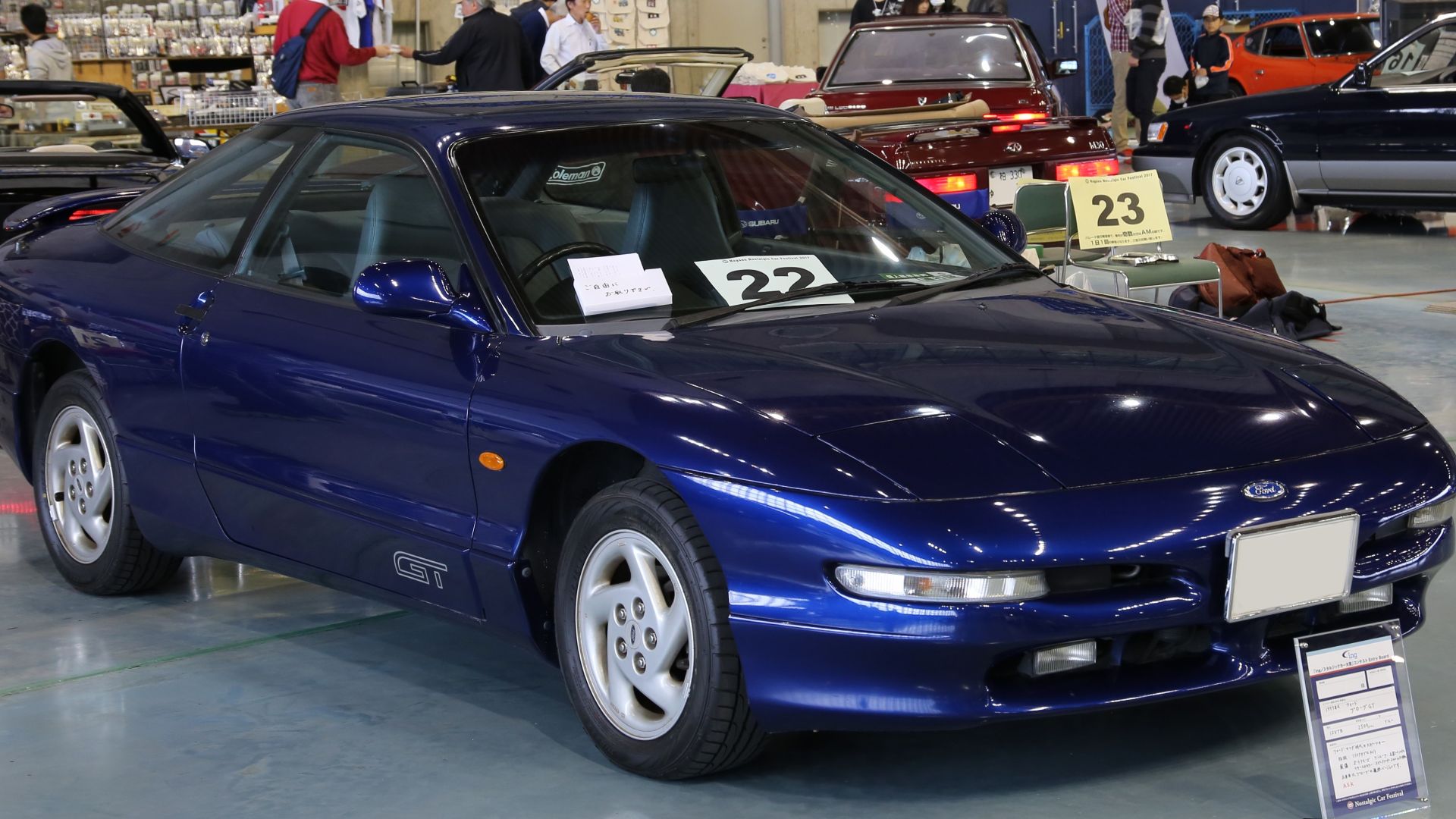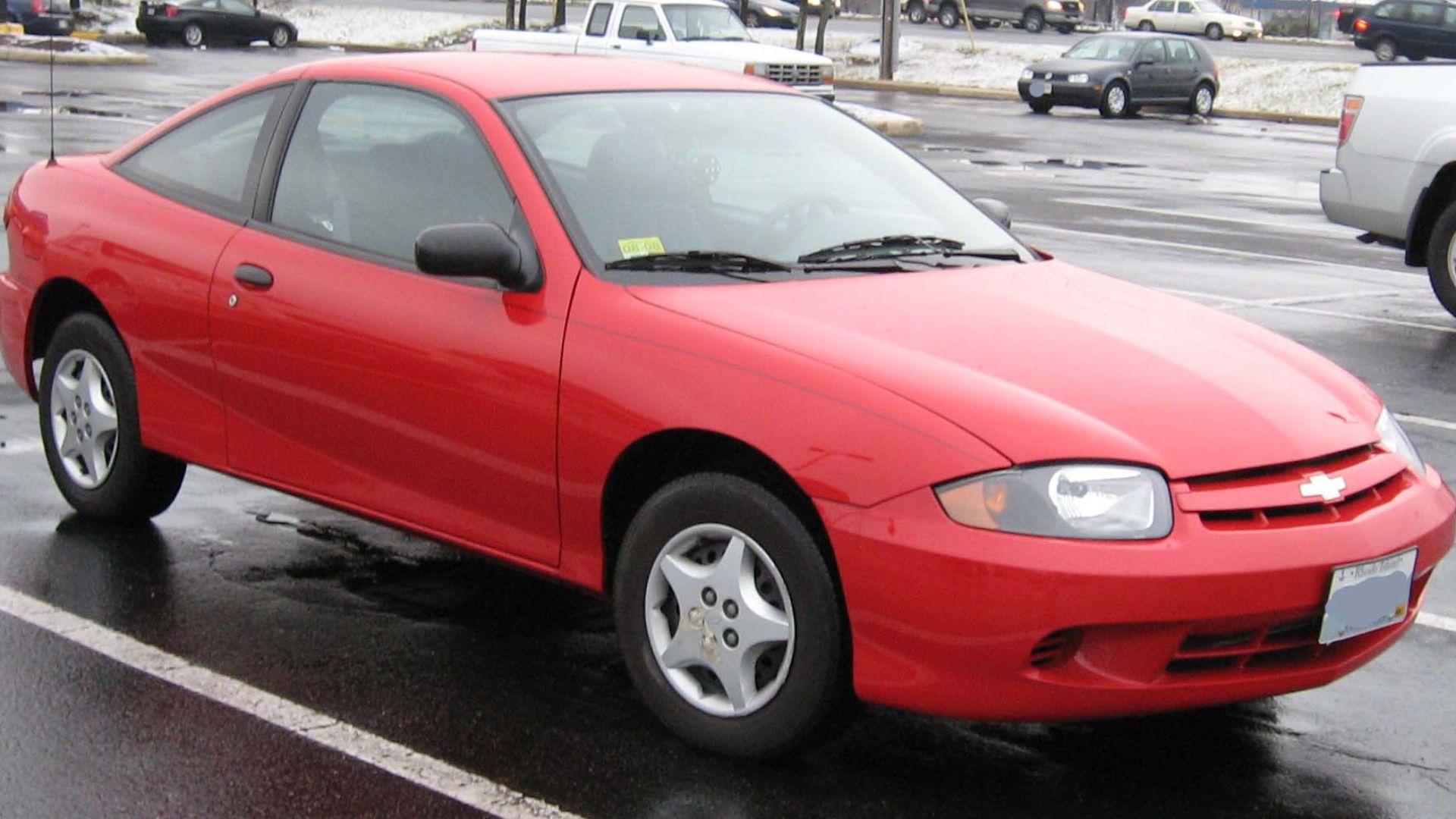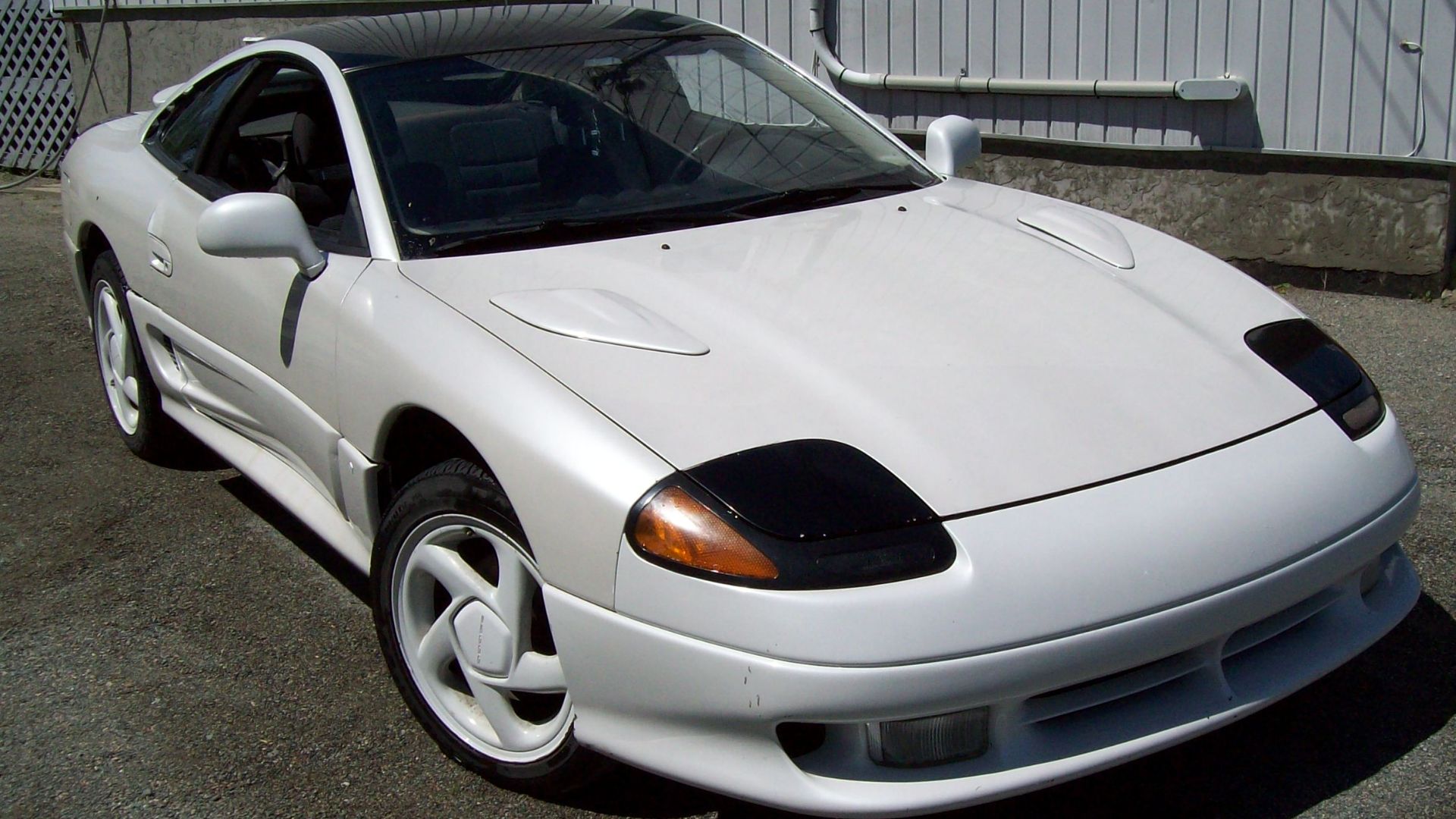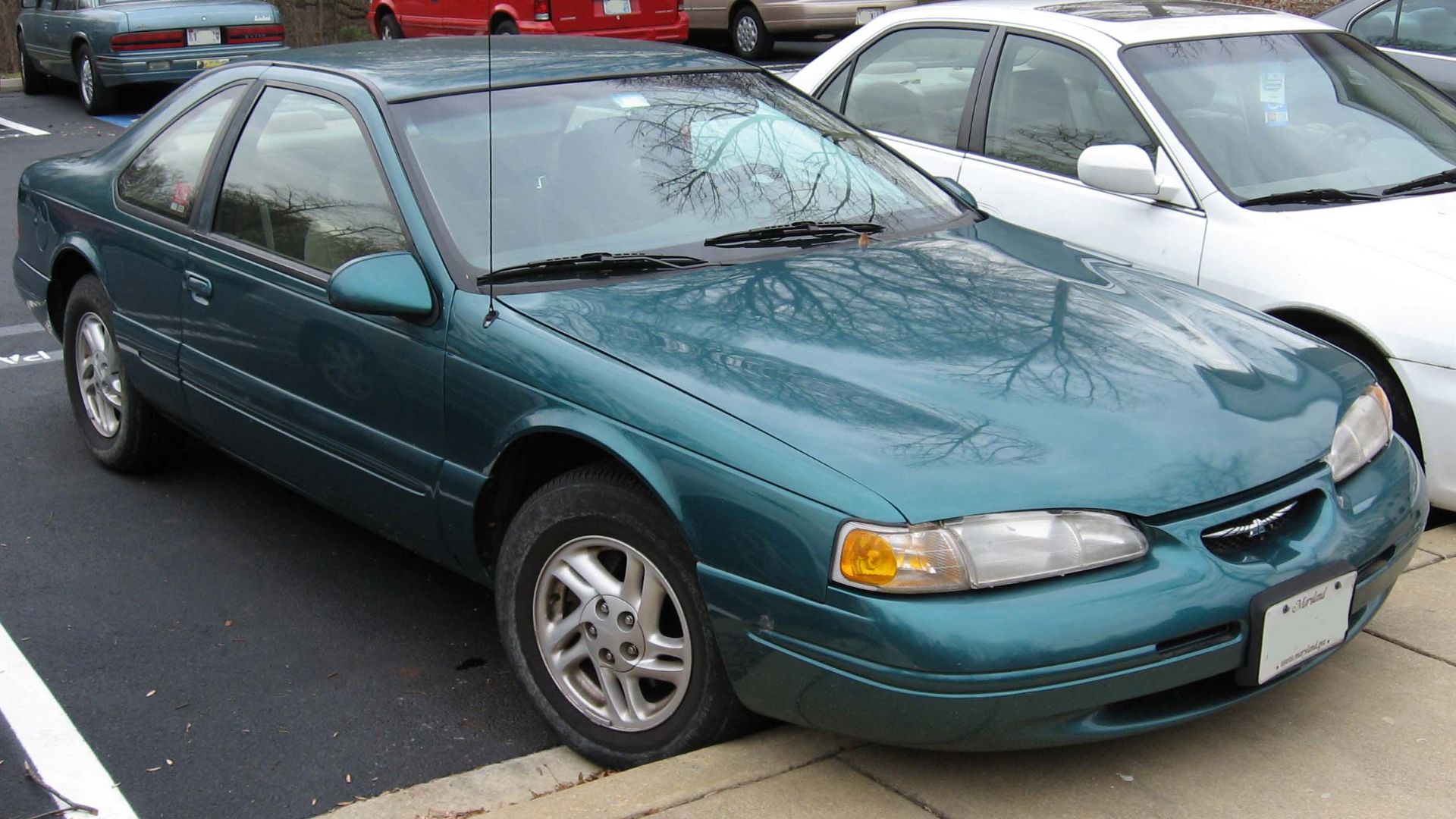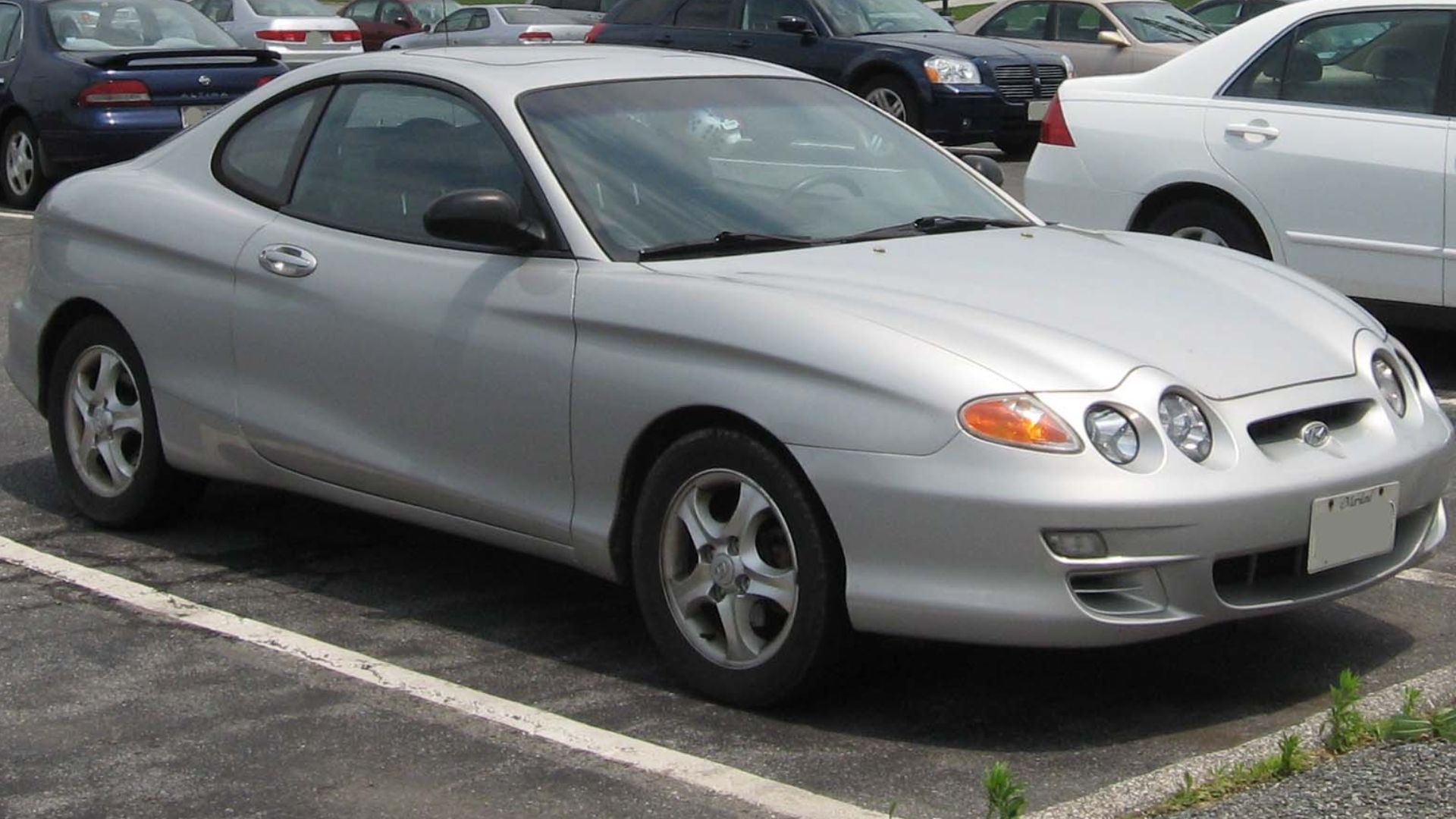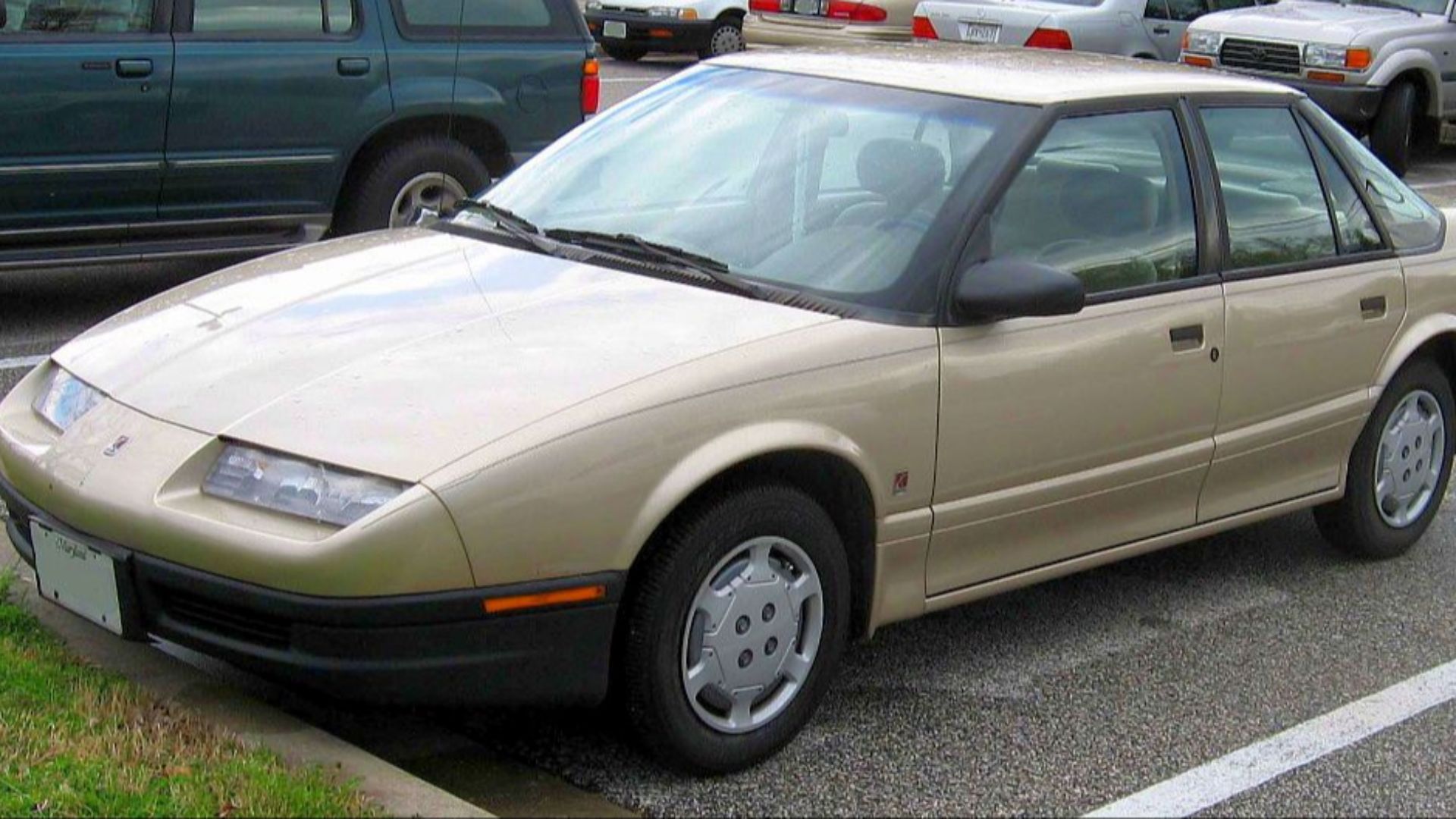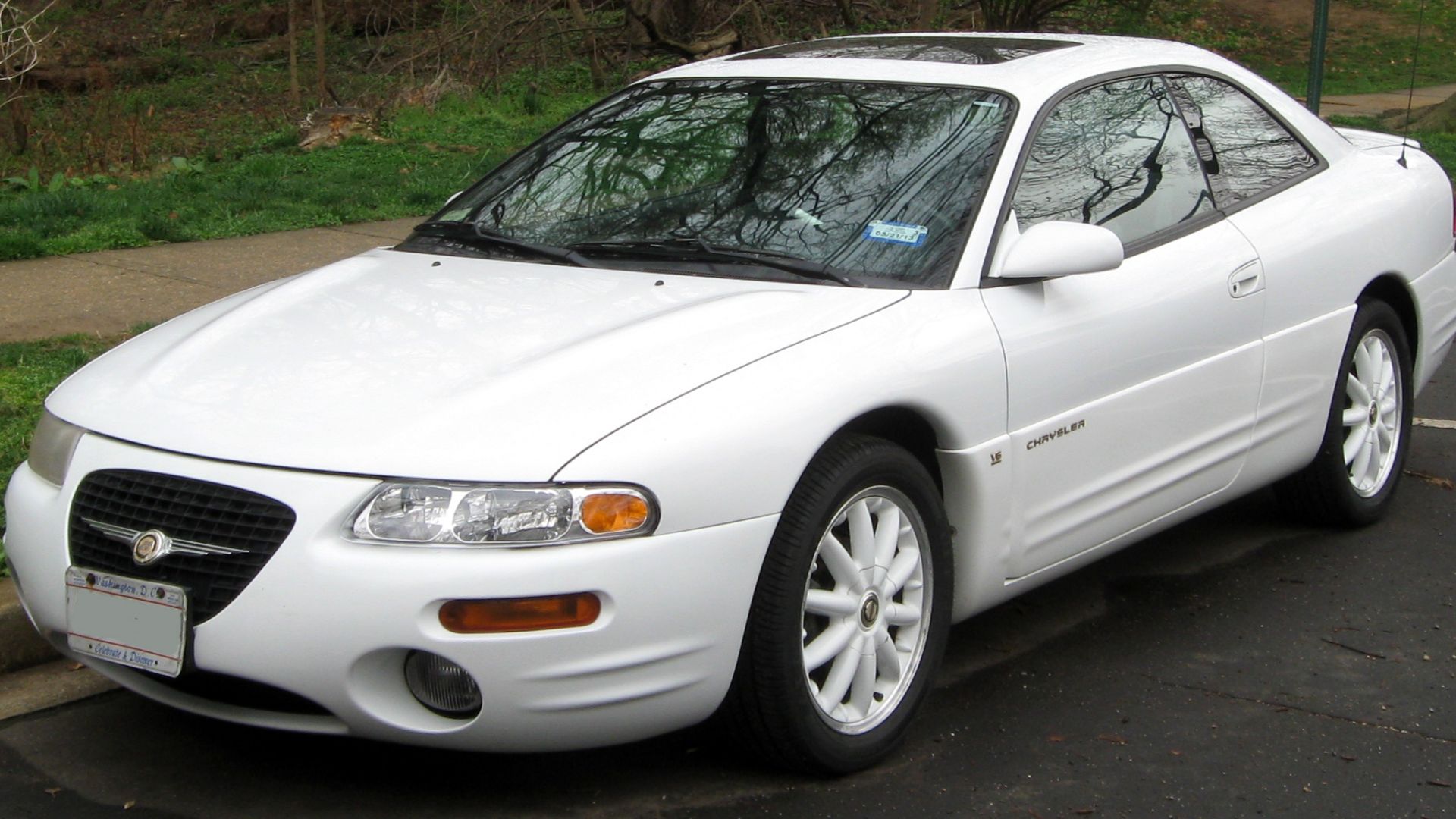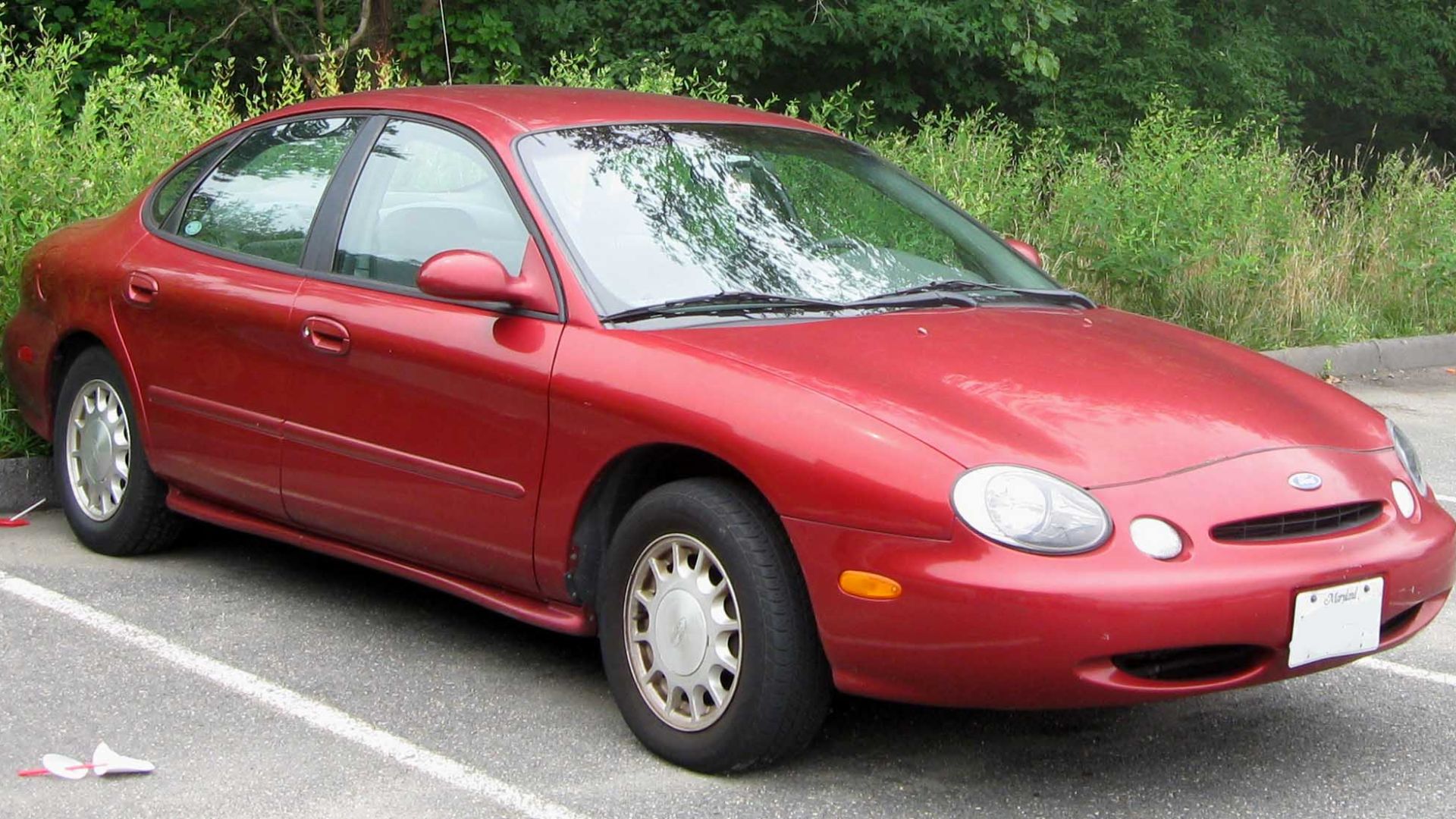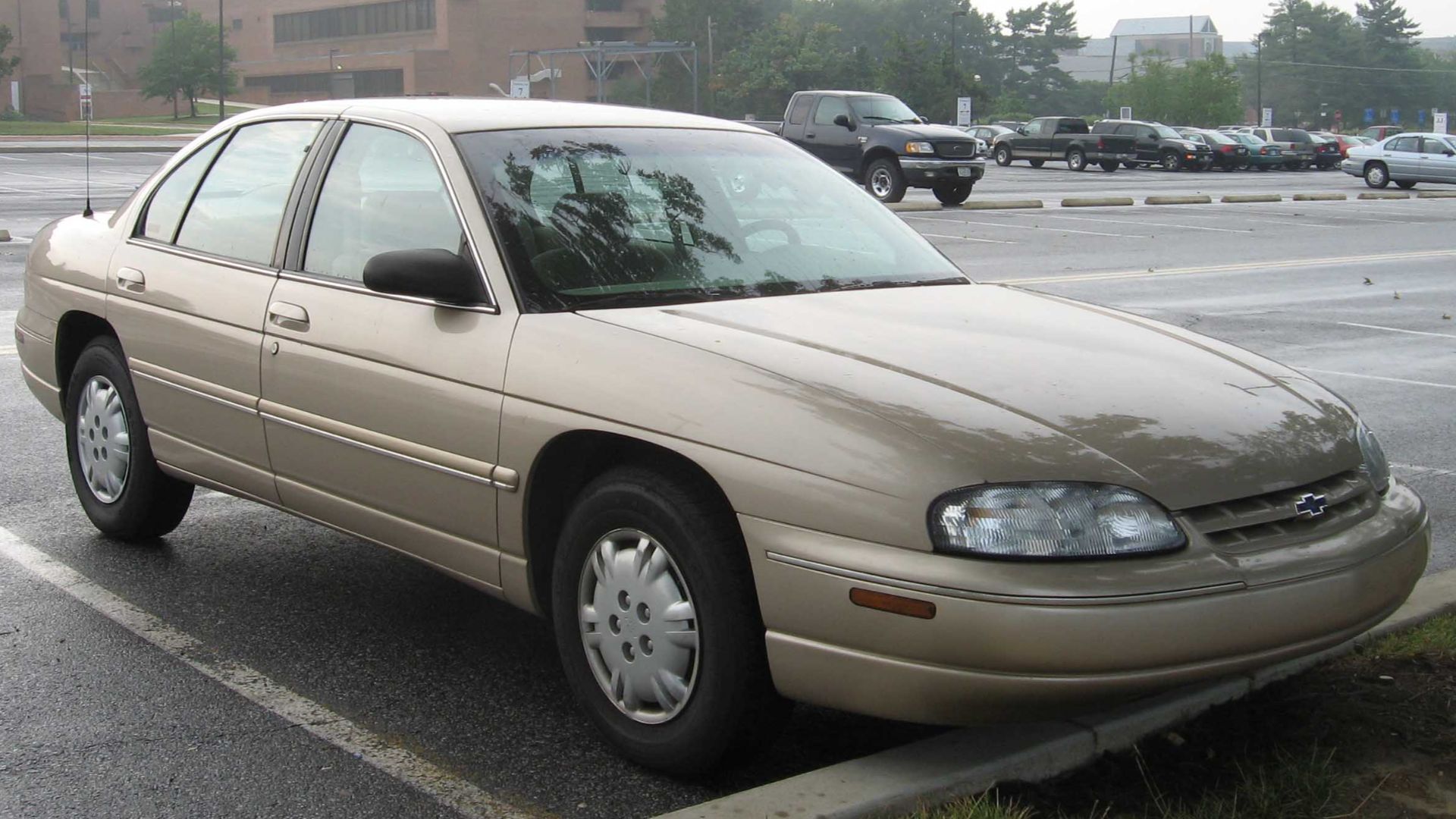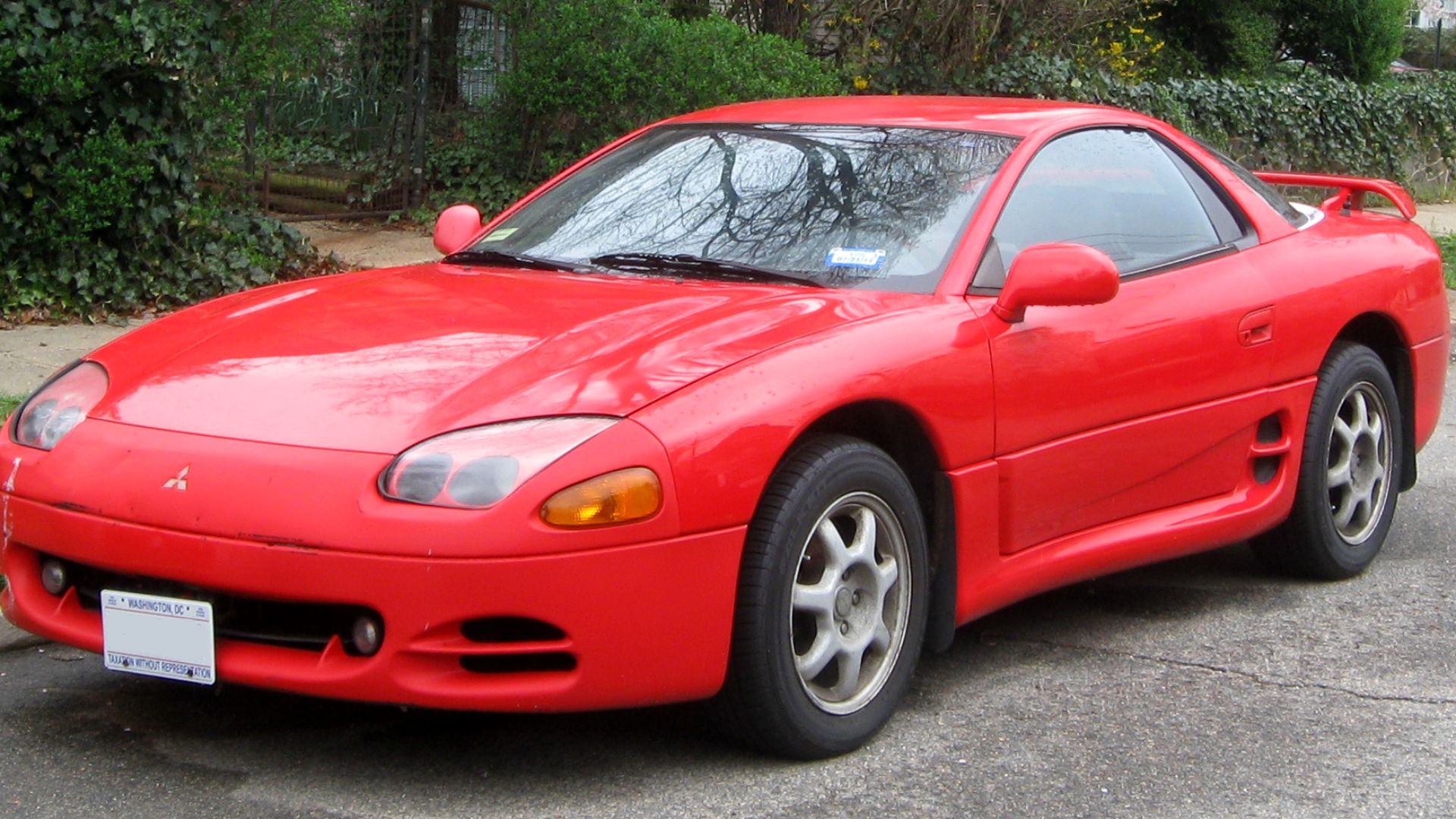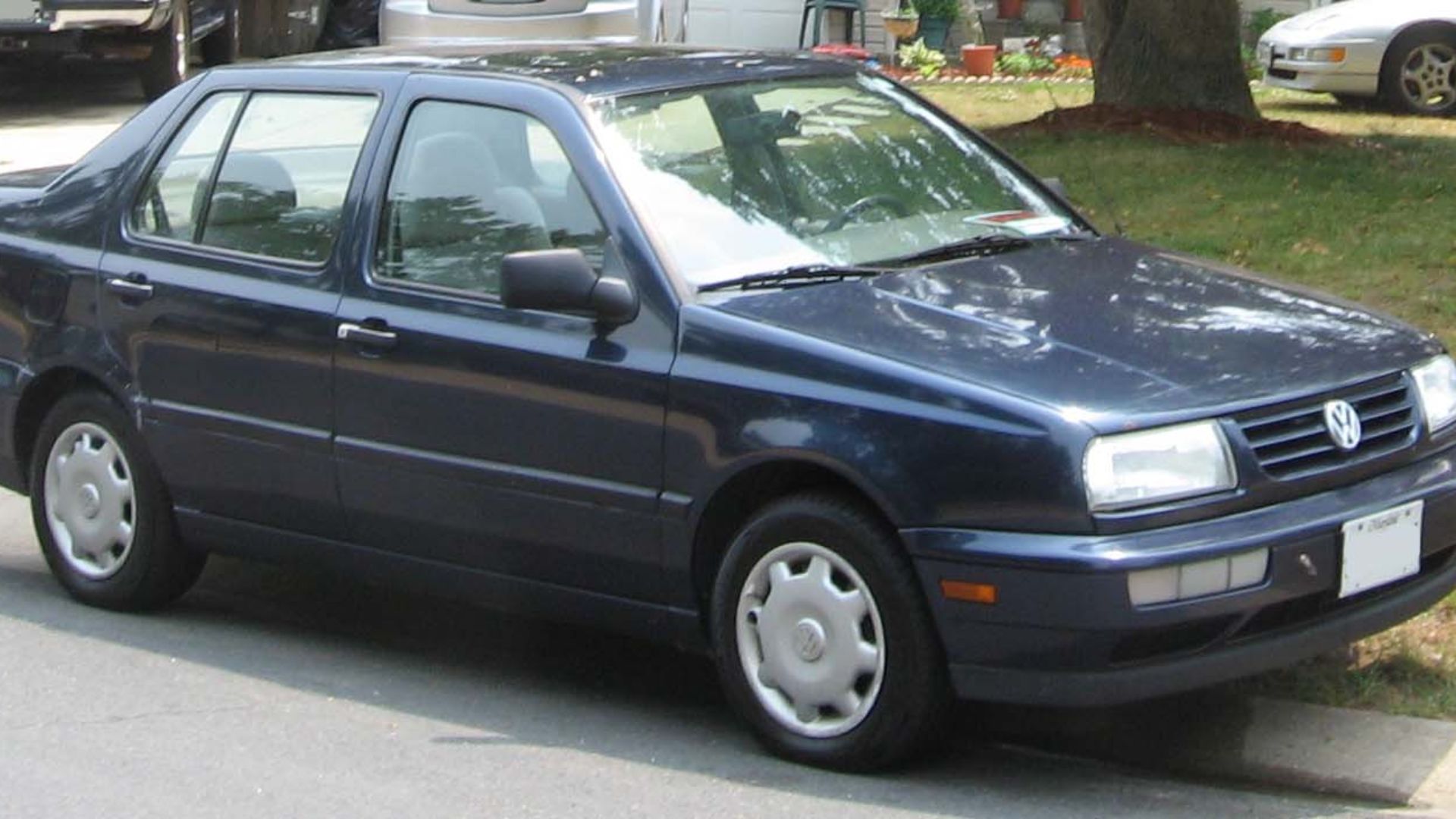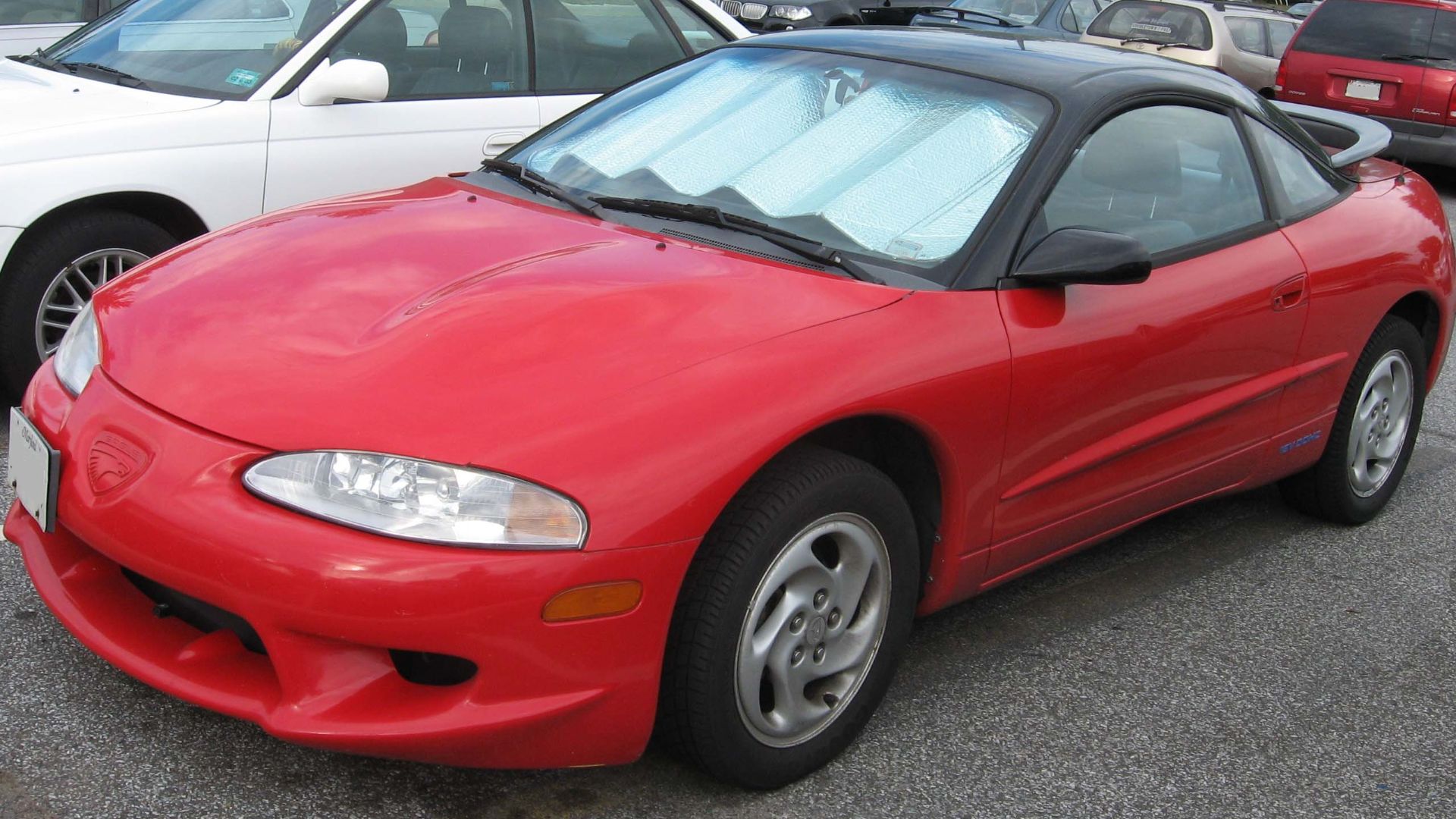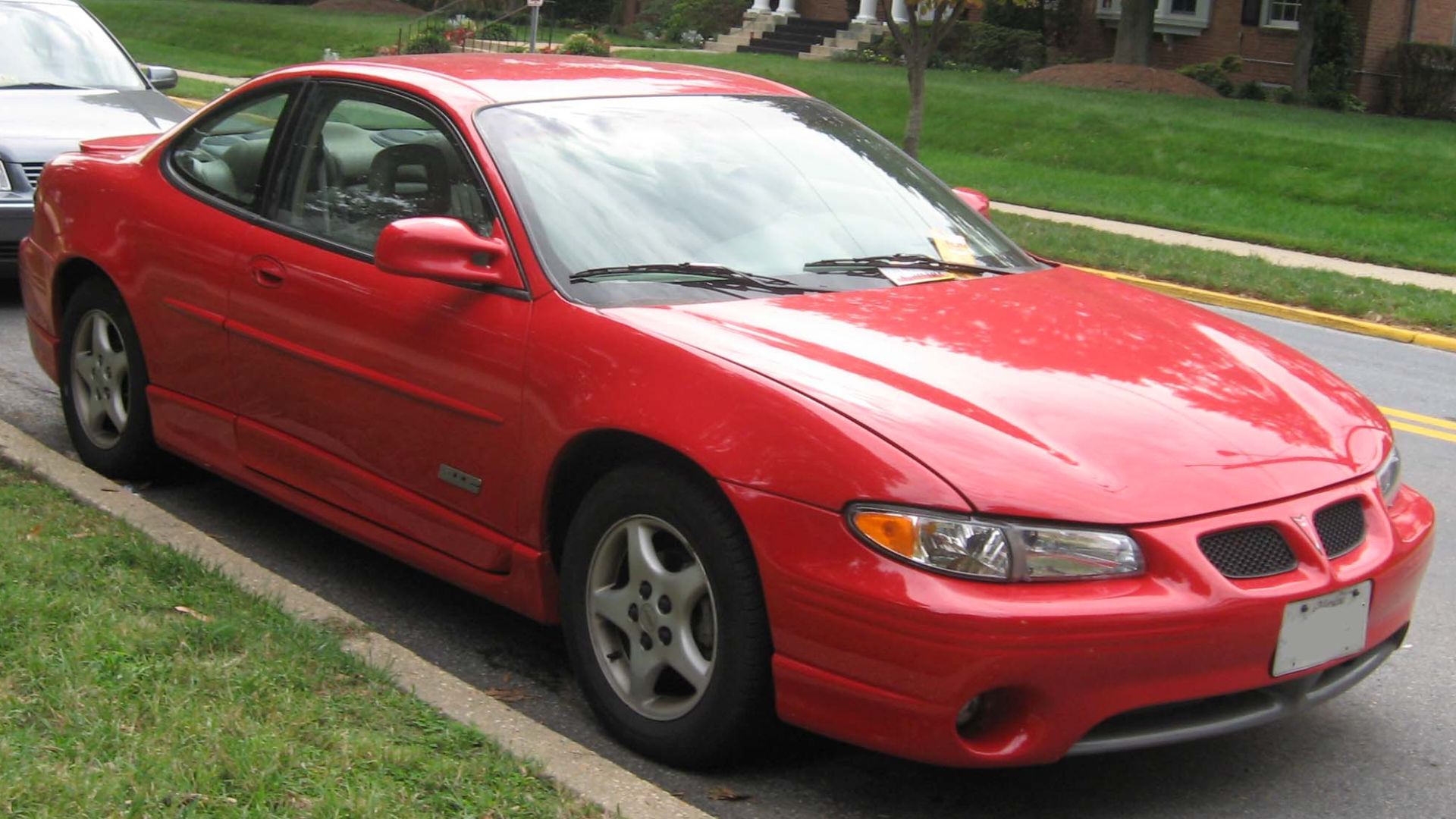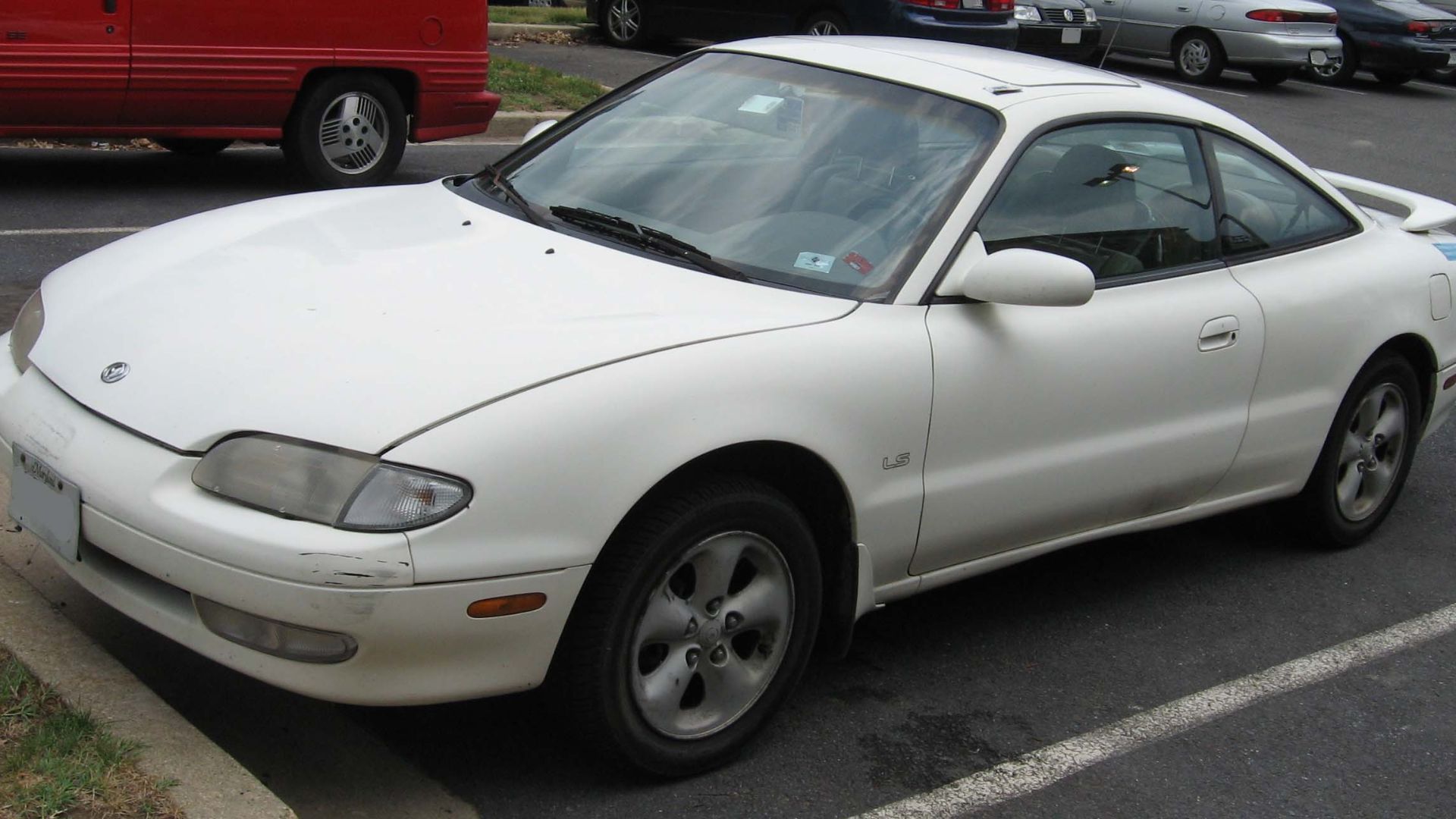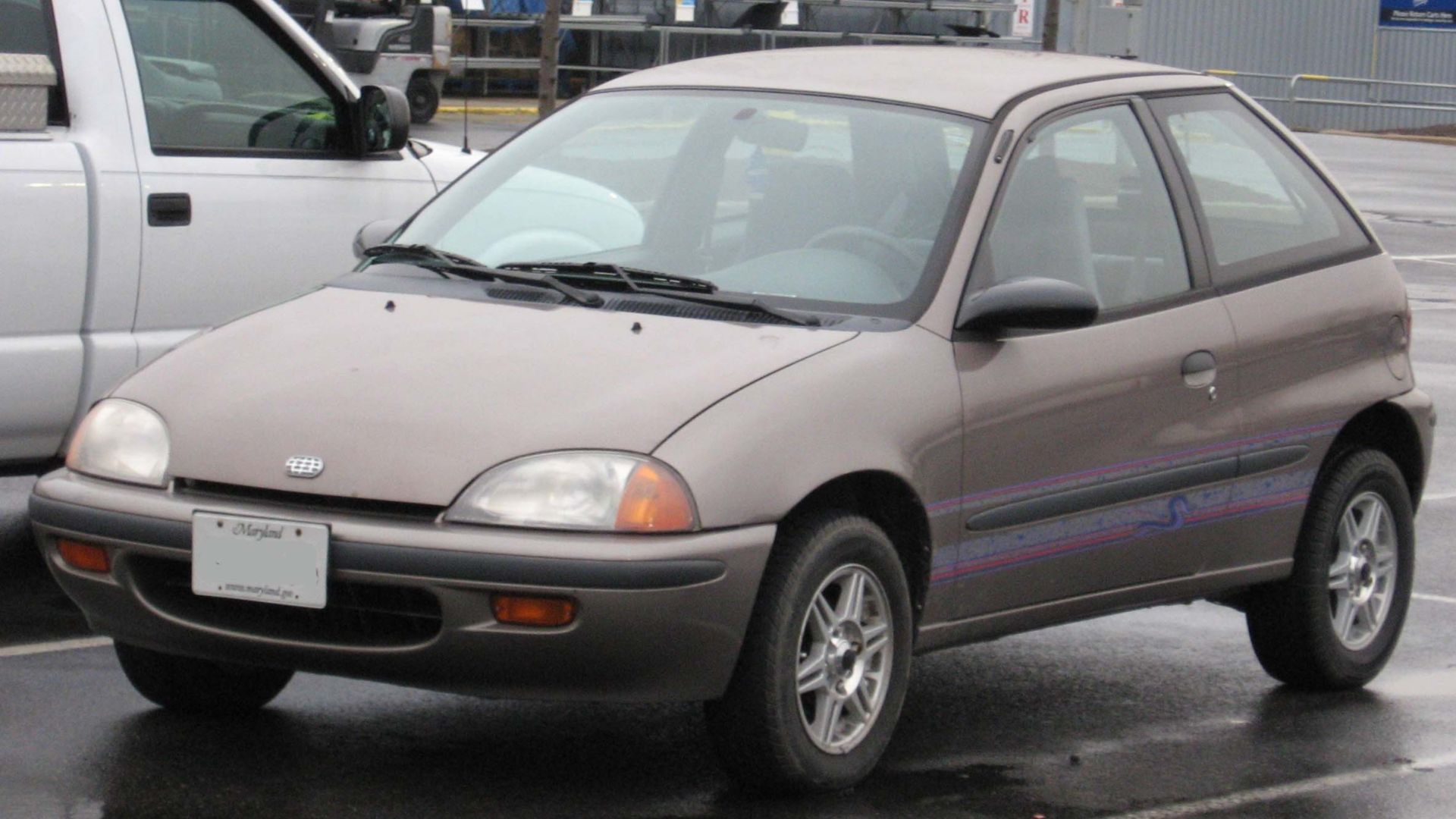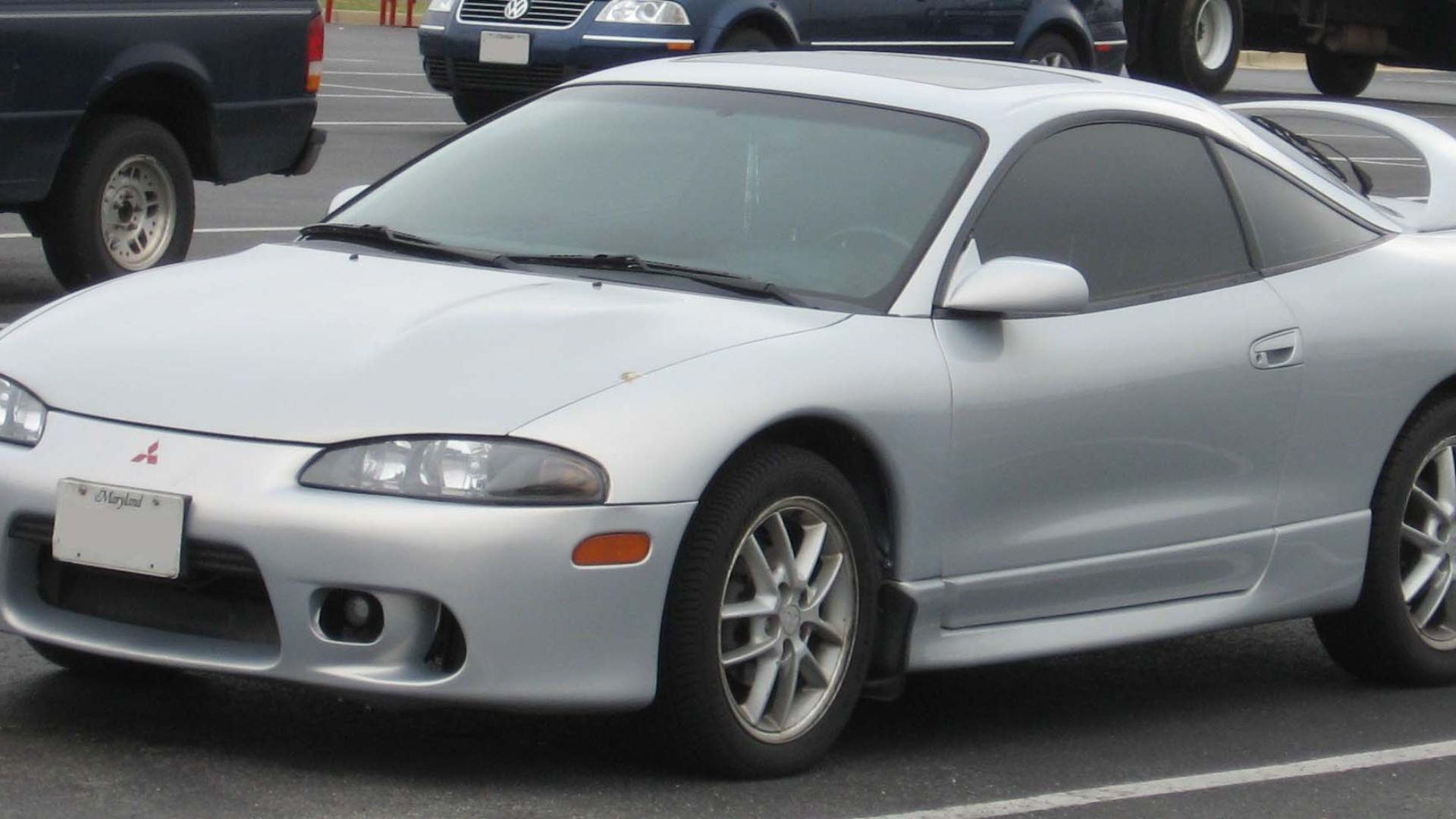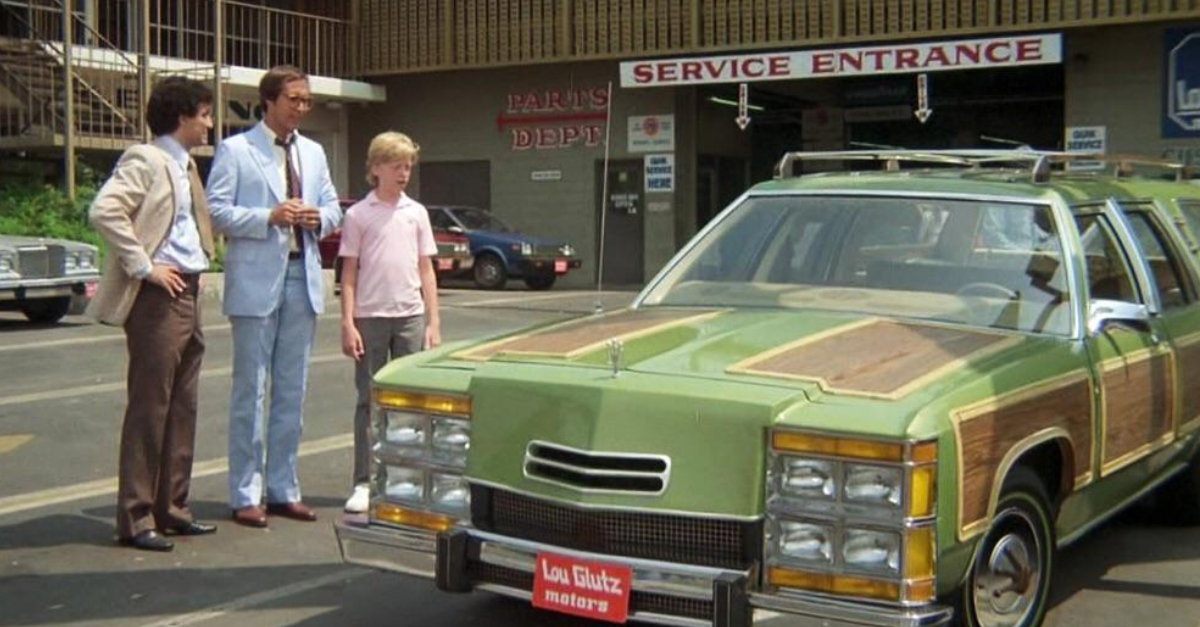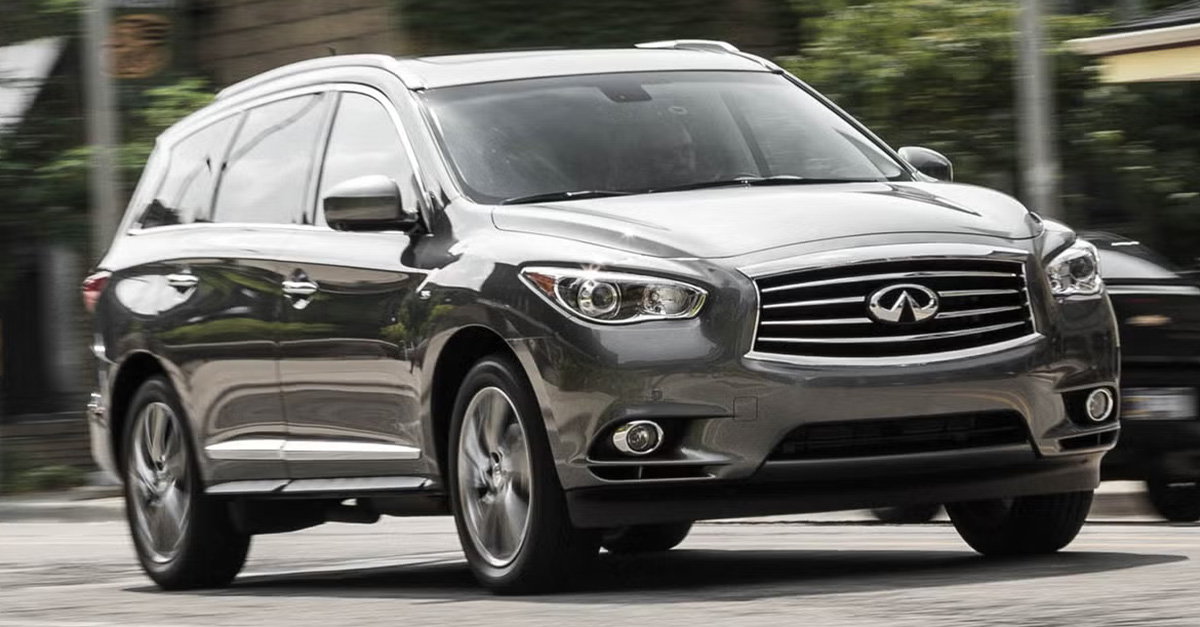When Chrome Dreams Aged
Saturday nights, rolled-down windows, and that car stereo blasting your favorite cassette—it felt like life couldn’t get better. Decades later, those rides sit quietly in memory, no longer the head-turners they once were, but still unforgettable for what they meant.

Pontiac Grand Am (1992–1998)
Pontiac’s fourth-gen Grand Am promised sporty flair with its GT badge and V6, yet the numbers told another story. Even the hottest 160-horsepower coupe ambled to 60 mph in 8.5 seconds. Offered as a sedan or coupe with optional leather, it proved more suburban cruiser than street warrior.
Ford Probe (1989–1997)
Born of Ford’s partnership with Mazda, the Probe shared its bones with the MX-6 and featured pop-up headlights on GT models. When Ford briefly considered replacing the Mustang with it, public outrage reversed the plan. Stylish and controversial, the Probe defined a unique Japan-meets-Detroit moment.
Chevy Cavalier (1995–2005)
Buyers could pick their Cavalier flavor: coupe, sedan, or convertible. That versatility helped the third-generation model enjoy a full decade of production. As one of America’s most affordable rides, it balanced practicality with accessibility, cementing its place in countless driveways through the late 1990s and early 2000s.
Dodge Stealth (1991–1996)
A badge swap disguised the Dodge Stealth’s true roots as a Mitsubishi 3000GT. Beneath its American nameplate hid serious performance—a twin-turbo V6 with all-wheel drive. But even its Indy 500 pace-car spotlight was revoked for being “too Japanese,” forcing Dodge to parade a Viper instead.
Ford Thunderbird (1989–1997)
Motor Trend’s 1989 Car of the Year, the Thunderbird Super Coupe, blended engineering ambition with power. Its independent rear suspension stood apart from Detroit norms, while a supercharged 3.8-liter V6 gave it serious punch. That winning formula carried the T-Bird through the 1990s before its eventual fade.
Plymouth Neon (1995–2001)
Plymouth greeted America with a cheerful “Hi,” introducing the Neon’s surprisingly advanced design. Drivers chose between 2.0-liter SOHC and DOHC inline-four engines, both efficient and peppy. It was so adaptable that Chrysler marketed it under three badges—Plymouth, Dodge, and Chrysler—through its 1995-2001 run.
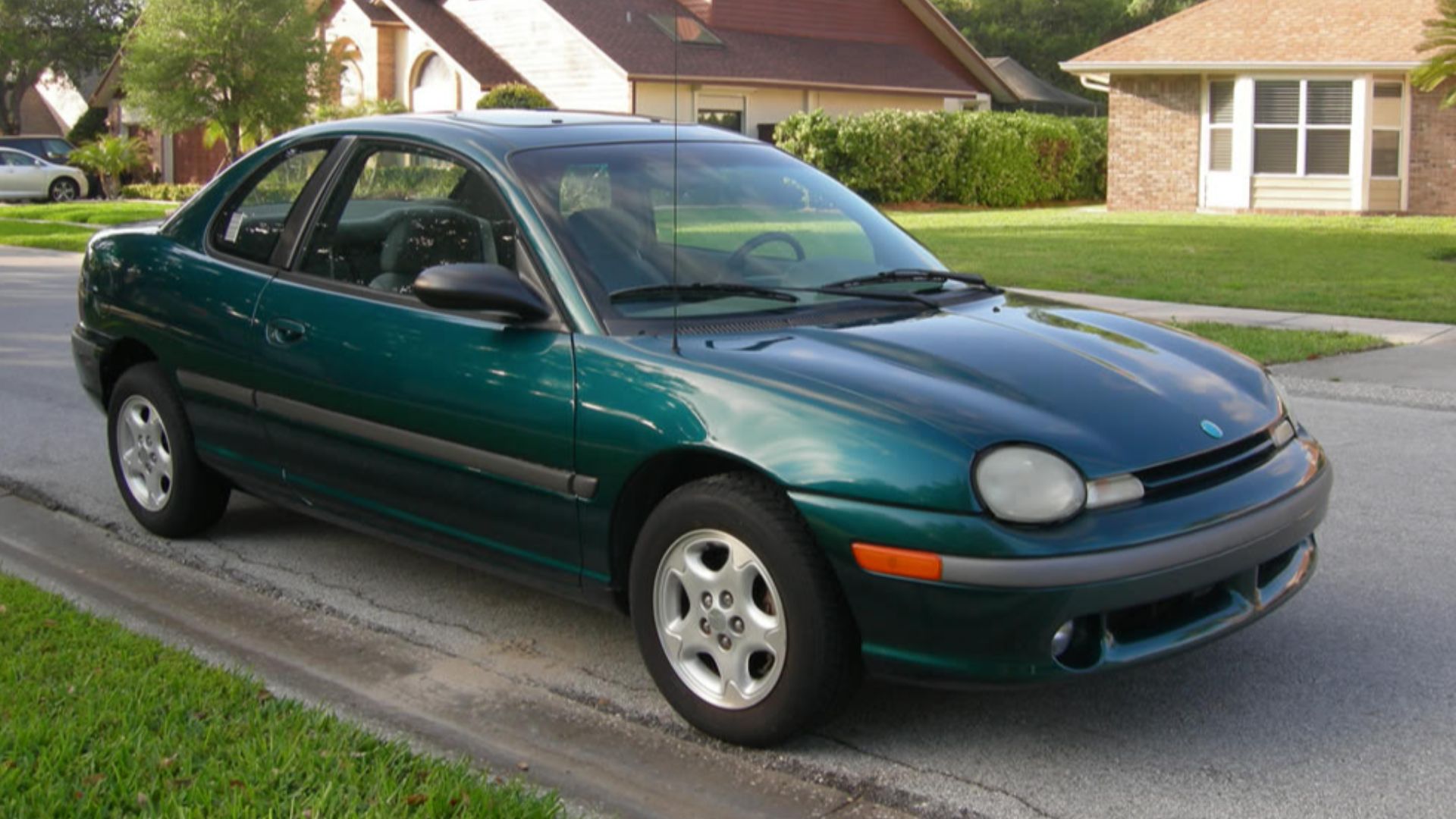 Distancerunner15, Wikimedia Commons
Distancerunner15, Wikimedia Commons
Hyundai Tiburon (1996–2001)
Hyundai’s first real sports coupe, the Tiburon, arrived in 1996 with curves and confidence. Its name, Spanish for “shark”, fit the car’s intent: sleek, agile, and hungry for credibility. While modest in performance, it signaled Hyundai’s coming-of-age moment in the North American performance market.
Saturn SL (1991–2002)
Saturn promised to reinvent General Motors’s image with “a different kind of car company.” The SL sedan’s dent-resistant polymer panels and honest simplicity seemed futuristic in 1991. However, by 2002, its modest power and plain interior left Saturn’s early idealism buried under the weight of ordinary execution.
Chrysler Sebring (1995–2000)
Few realized the Sebring coupe rode on Mitsubishi Eclipse architecture, a cost-saving stroke that launched Chrysler’s stylish mid-90s entry. The convertible became a darling of the rental fleet, boosting sales. Over time, though, the Sebring’s bland looks and reliability issues dulled its once-bright promise of attainable sophistication.
Ford Taurus (1996–1999)
America’s sales champ tried to stay ahead with the 1996 redesign, even swapping safe lines for radical ovals. The Taurus’s third generation split opinion—praised for boldness, mocked for excess. Still, its sedan-and-wagon flexibility reminded drivers why the nameplate had dominated driveways throughout the decade.
Chevrolet Lumina (1990–2001)
Chevrolet introduced the Lumina to replace both the Celebrity and Monte Carlo with a single streamlined platform. It served sedans and coupes alike until the Monte Carlo returned in 1995. Lumina’s badge later traveled abroad to carry Chevrolet’s midsize identity into Australia and the Middle East.
Mitsubishi 3000GT (1990–1999)
Japan’s GTO reached America as the 3000GT, loaded with bleeding-edge tech—twin-turbo VR-4 V6, all-wheel drive, four-wheel steering, and active aerodynamics. Its 3,800-pound mass and high upkeep, however, blunted its brilliance. In the end, complexity outweighed charisma.
Cadillac Catera (1997–2001)
Cadillac lightened up in the 90s with the Catera, “the Caddy that zigs”. A cartoon duck mascot and European flair set it apart. Underneath, it was German-bred, built on the Opel Omega B platform, and it offered rear-wheel-drive handling in a compact luxury package that hinted at Cadillac’s global aspirations.
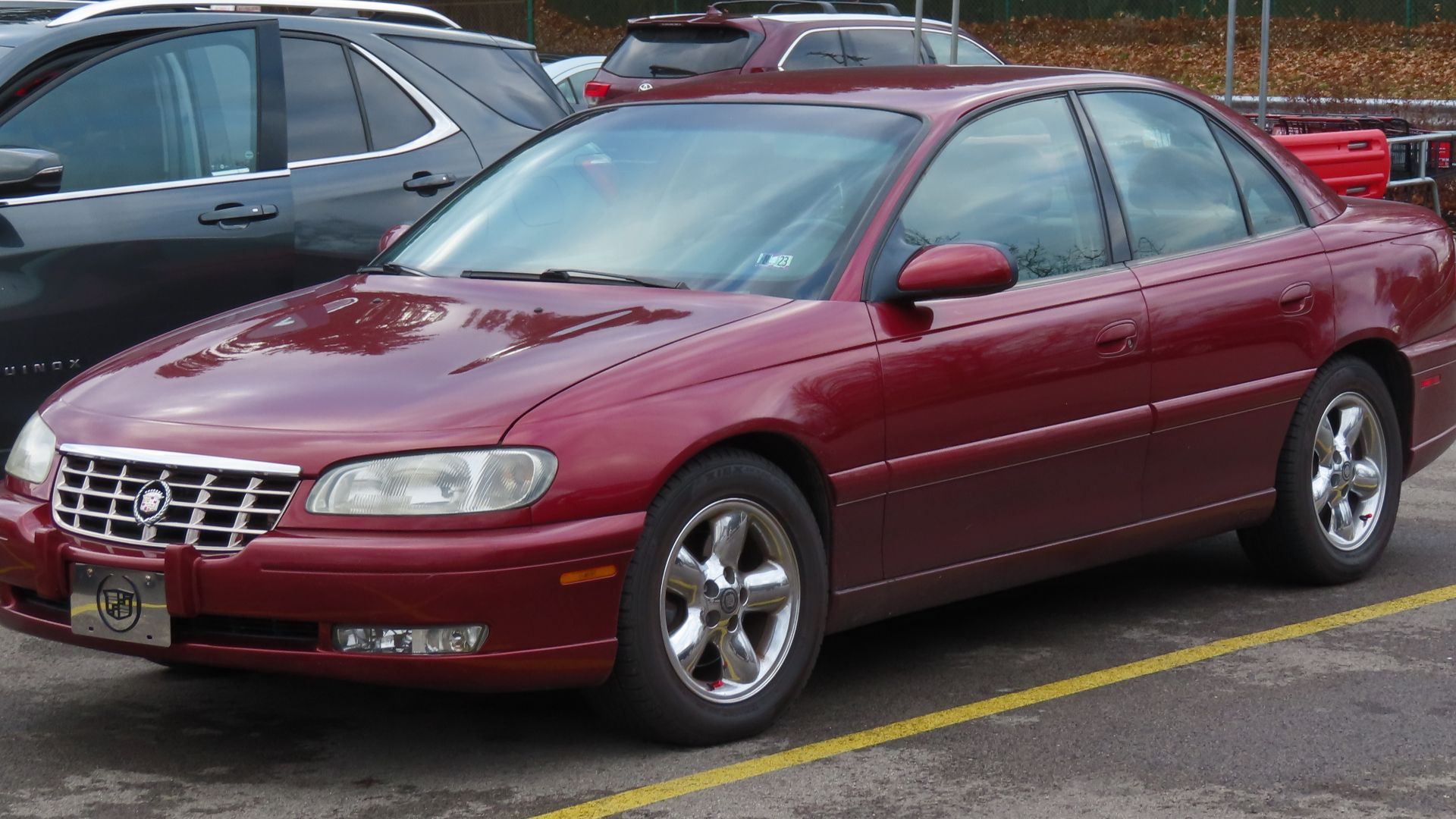 MercurySable99, Wikimedia Commons
MercurySable99, Wikimedia Commons
Oldsmobile Alero (1999–2004)
This ride, Oldsmobile’s last new model, was available as a coupe or a sedan from 1999 to 2004. Despite its tidy proportions and reliability, it lacked excitement in both style and performance. Time hasn’t been kind; it endures mainly as the brand’s final bow before Oldsmobile’s curtain fell.
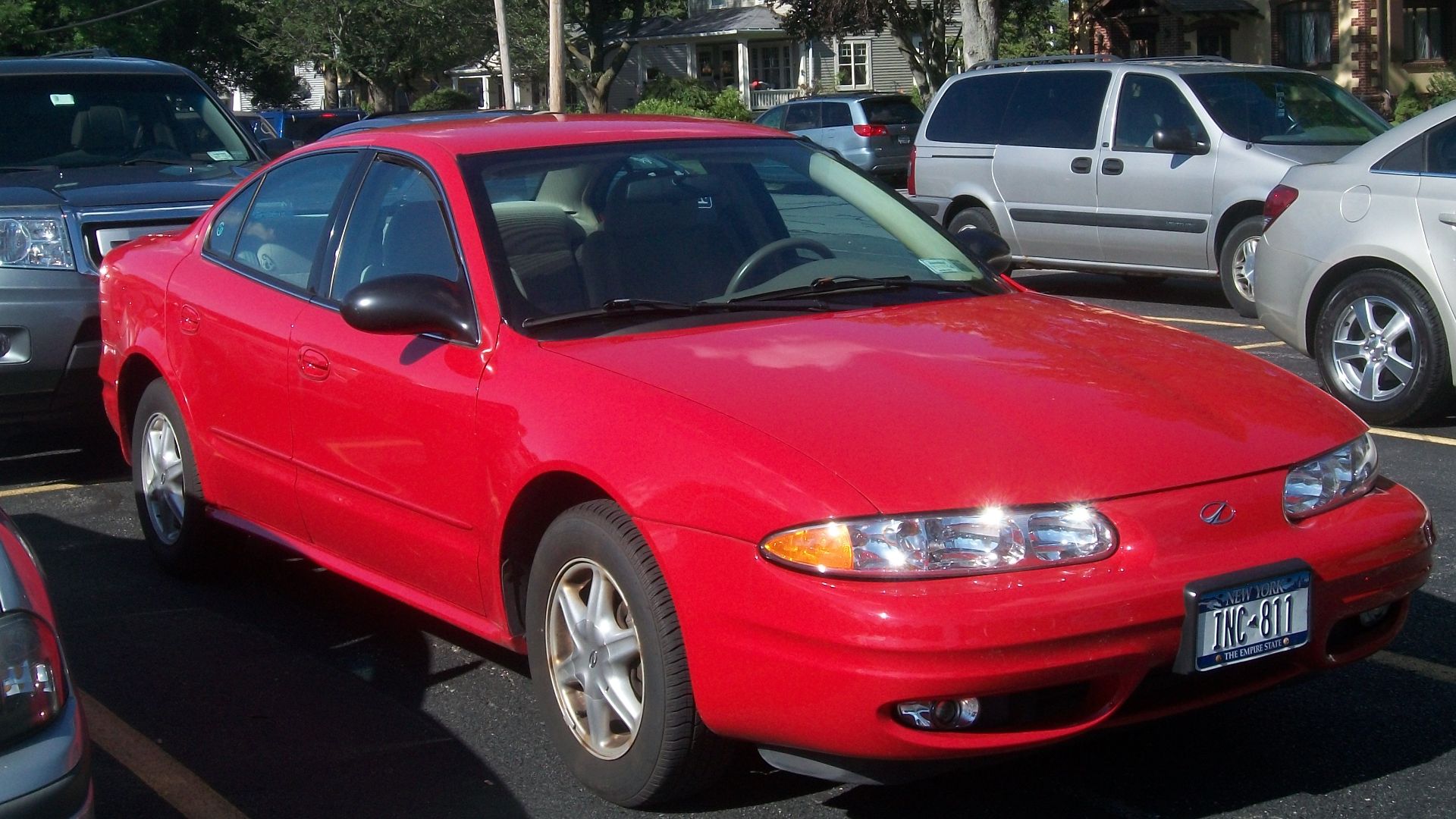 AuroraTerra, Wikimedia Commons
AuroraTerra, Wikimedia Commons
Volkswagen Jetta (Mark III/IV) (1993–2005)
Across two generations—Mark III through 1999 and Mark IV through 2005—the Jetta built VW’s American empire. Known as the Bora elsewhere, it offered German solidity and an upscale feel in a compact frame. Production in Mexico kept costs manageable while sustaining North America’s love affair with Volkswagen sedans.
Dodge Stratus (1995–2000)
The Dodge Stratus began life amid Chrysler’s “cloud car” trio beside the Cirrus and Breeze. While its first run ended in 2000, the nameplate remained in use until 2006. Along the way, the Stratus even gained pop-culture status, immortalized by a viral Saturday Night Live sketch celebrating its ordinary brilliance.
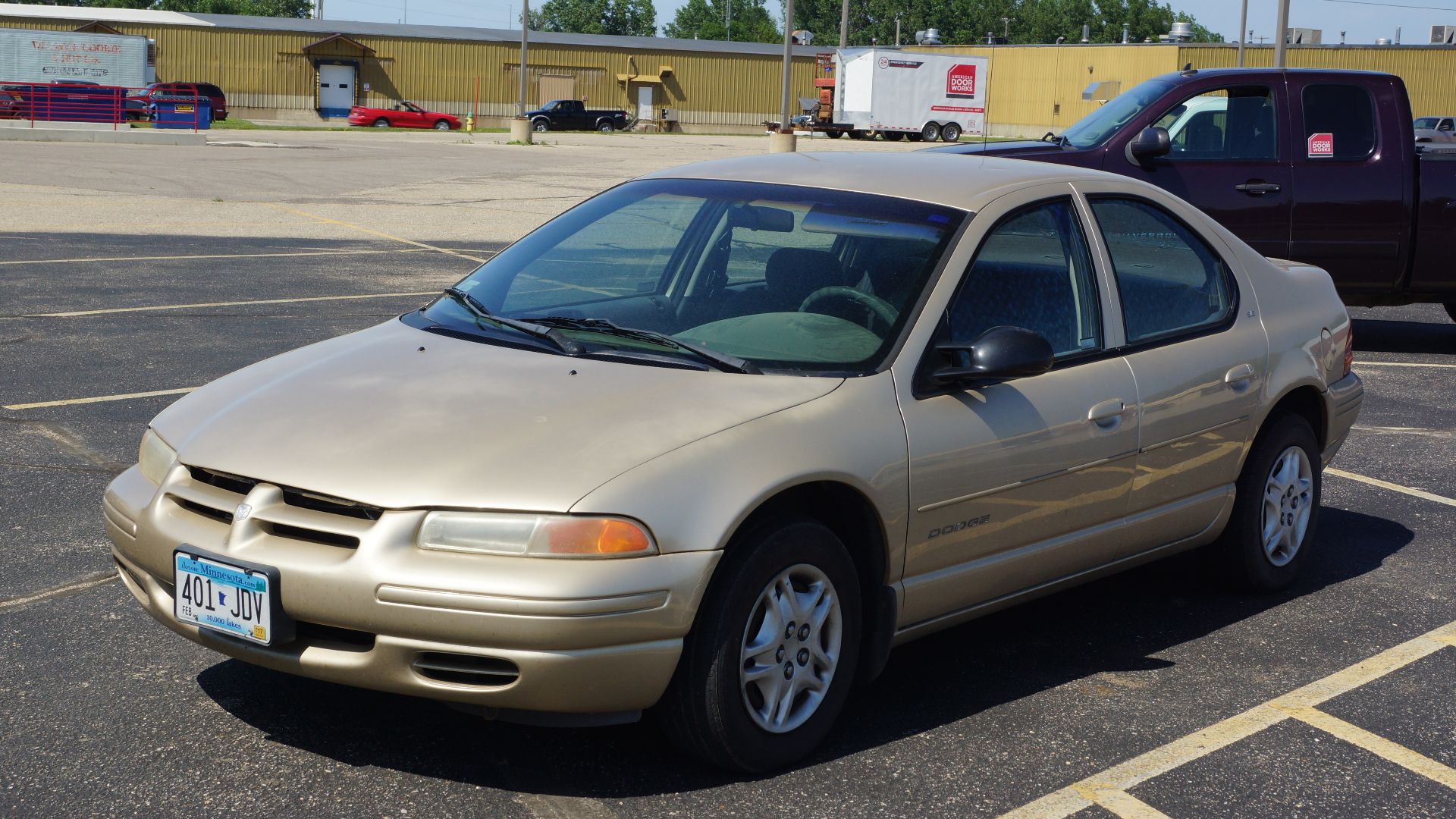 Greg Gjerdingen from Willmar, USA, Wikimedia Commons
Greg Gjerdingen from Willmar, USA, Wikimedia Commons
Eagle Talon (1990–1998)
Mechanically a twin to the Eclipse and Laser, the Eagle Talon stood out with its signature black-roof two-tone look. Enthusiasts still revere the TSi AWD variant, whose turbocharged performance and tunability made it a cult hero. By 1998, its legacy was sealed among import-tuning pioneers.
Chrysler LHS (1994–2001)
Chrysler’s LHS was the 90s “cab-forward” revolution that pushed wheels outward for sleek proportions and roomy interiors. As the brand’s flagship, it blended front-wheel-drive practicality with executive-level comfort. When the 300M arrived in 1999, the LHS gracefully shared showrooms until both bowed out by 2001.
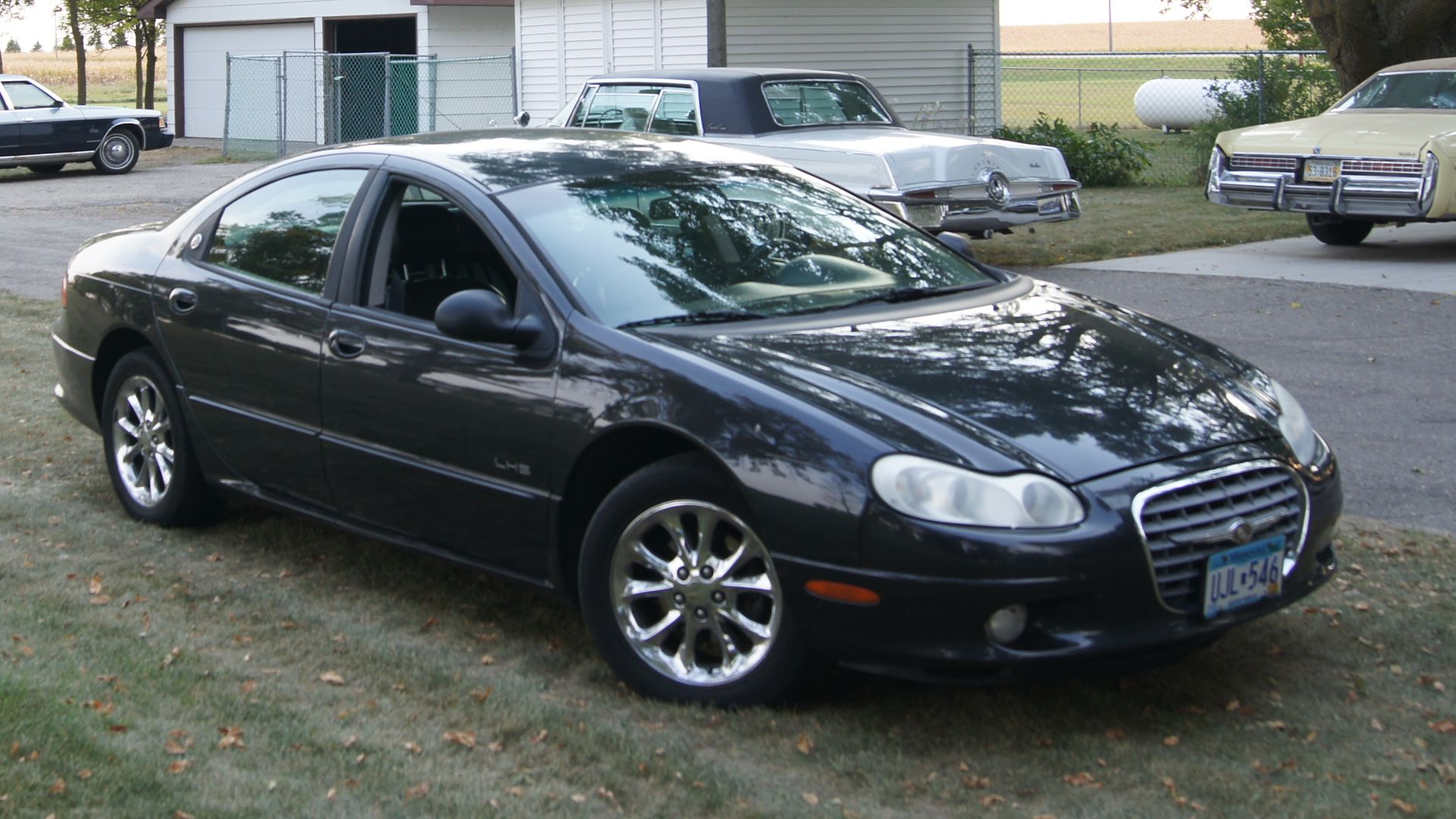 Greg Gjerdingen from Willmar, USA, Wikimedia Commons
Greg Gjerdingen from Willmar, USA, Wikimedia Commons
Honda Prelude (1992–2001)
Precision defined the Prelude, especially with Honda’s pioneering four-wheel-steering system. The 1992 to 2001 models married sharp handling with clean, understated styling. Despite critical acclaim, shifting consumer tastes toward SUVs silenced the Prelude’s tune—leaving enthusiasts to remember it as a masterpiece from Honda’s golden engineering age.
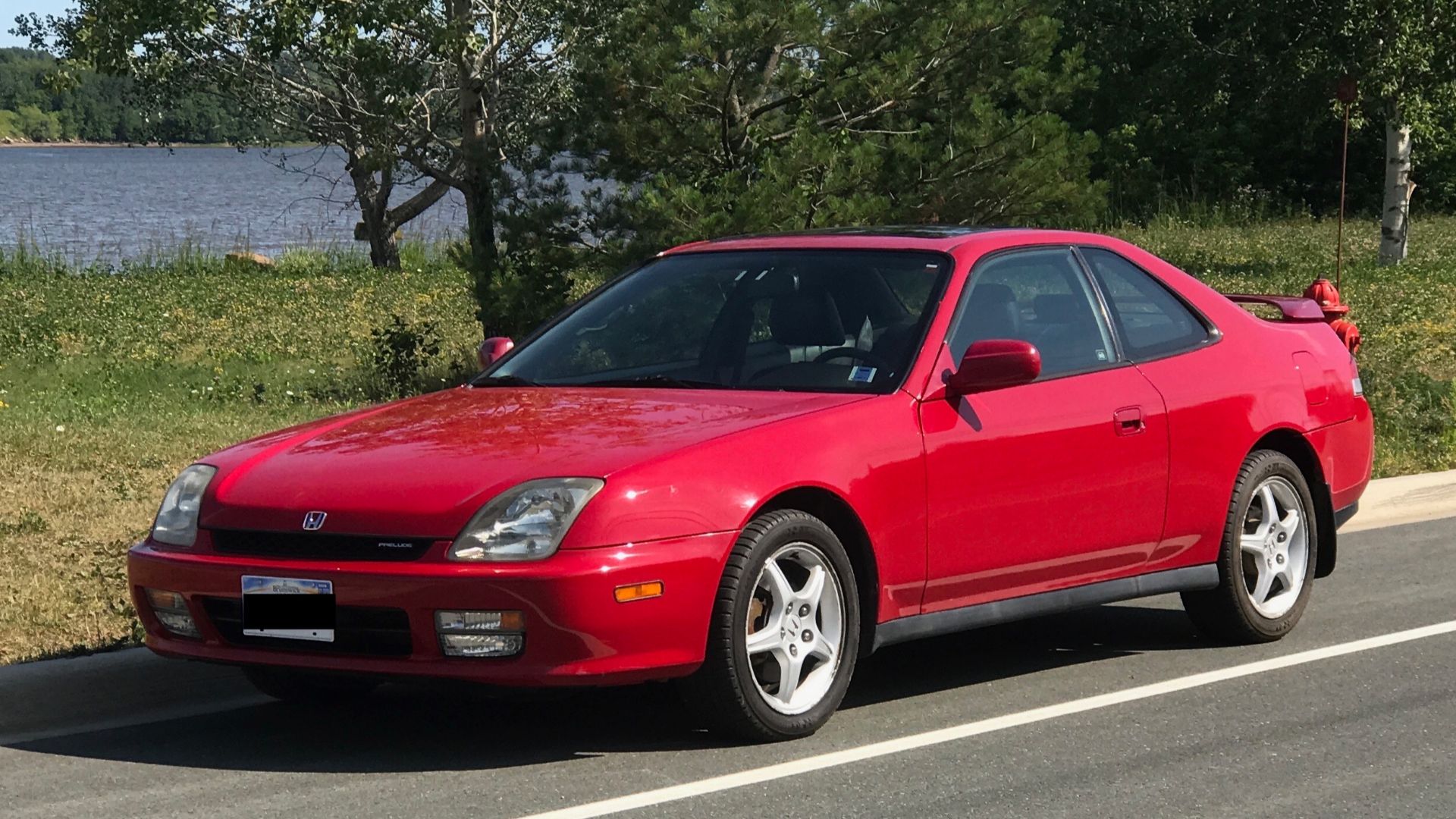 Benjamin MacLeod, Wikimedia Commons
Benjamin MacLeod, Wikimedia Commons
Pontiac Grand Prix (1997–2003)
The sixth-generation Grand Prix fused practicality with performance to give drivers both coupe and sedan options. It's GTP trim, powered by a supercharged 3.8-liter V6, pushed muscle-car spirit into the 90s. By 2003, Pontiac’s sport-luxury experiment proved both capable and emblematic of the brand’s soon-to-fade ambition.
Chevrolet Tracker (1989–2004)
The Tracker blended SUV function with compact efficiency. Born from General Motors’s partnership with Suzuki, it appeared as two- or four-door variants under Geo branding before evolving into a full Chevy model. Spanning 1989-2004, its simple mechanics and accessible price earned it a loyal following among adventure seekers.
Mazda MX-6 (1993–1997)
Built in Michigan yet unmistakably Japanese in spirit, the 93 MX-6 shared its chassis with Ford’s Probe but delivered livelier dynamics. Its smooth V6 and precise steering earned praise, though sales lagged. When production ended in 1997, it left behind a reputation for refined performance at a budget price.
Geo Metro (1995–2001)
Cheap never looked so cheerful. The Geo Metro offered three- and four-door practicality—and even a convertible option—while topping 40 mpg. A rebadged Suzuki Swift, it catered to thrifty commuters and students alike, proving that minimalism could still deliver open-air fun without breaking the bank.
Buick Reatta (1988–1991)
Long before touchscreens became standard, the Buick Reatta pioneered digital climate and audio controls. Hand-built in Michigan, this 1988-1991 luxury coupe combined tech ambition with traditional comfort. Its 3.8-liter V6 and front-wheel drive delivered smooth cruising, even if its futuristic vision outpaced buyers’s appetites at the time.
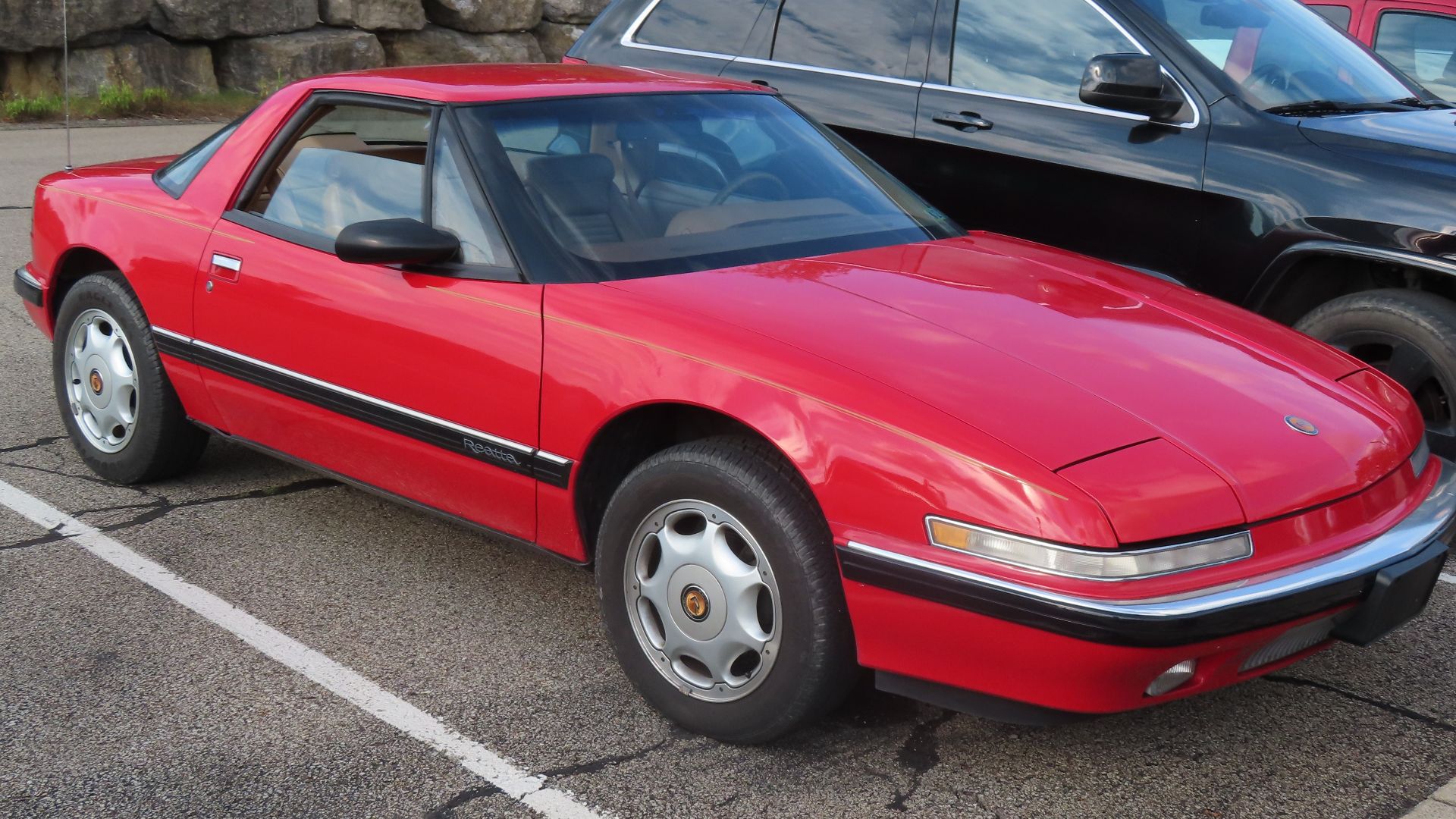 MercurySable99, Wikimedia Commons
MercurySable99, Wikimedia Commons
Mitsubishi Eclipse (1995–1999)
Freed from badge-sharing duties, the second-gen Eclipse (1995-1999) forged its own legend. The GSX trim’s turbocharged AWD setup thrilled enthusiasts and later lit up movie screens in The Fast and the Furious. It was a car that made every driveway feel one drag race away from glory.


